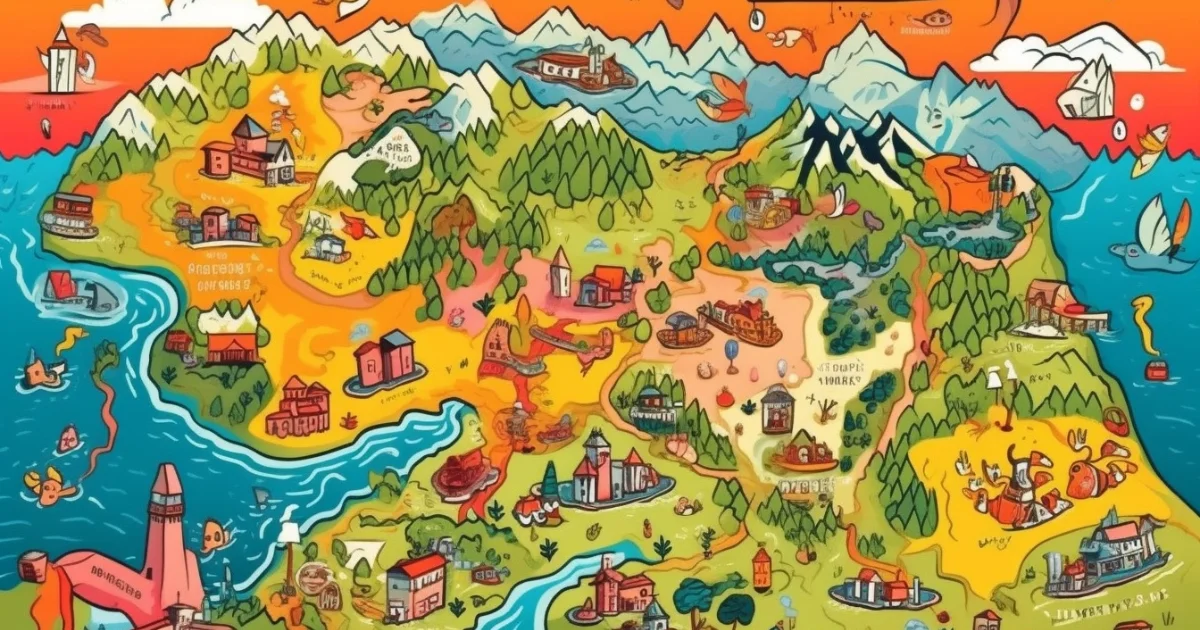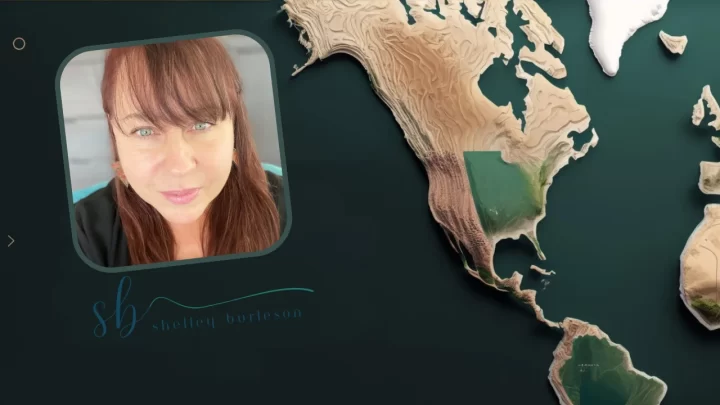This post may contain Amazon affiliate links which means, as an Amazon Associate, I may receive a small commission from purchases made through these links at no cost to you. I only recommend products I have personally used. To learn more, please see my privacy policy page.
Albania, officially known as the Republic of Albania, is a country in Southeast Europe on the Balkan Peninsula, characterized by its diverse geography which includes Adriatic and Ionian coastlines, an interior crossed by mountains and rivers, and a Mediterranean climate. It is a parliamentary republic with its capital in Tirana, the nation’s economic, political, and cultural center.
Key Words
- adriatic
- alps
- balkans
- bunkers
- cultural geography
- geopolitics
- ionian
- topography
- urbanization
Set off on a captivating expedition through Albania’s layered landscapes, where ancient narratives whisper among the mountain peaks and modern vitality pulses through the streets. Continue reading to unearth the secrets of this enigmatic country, from the echoes of its storied past to the vibrant tapestry of its contemporary life. Read on…
Introduction
Nestled along the sparkling Adriatic and the rugged highland of the Balkan Peninsula lies Albania, a country with a colorful landscape. Albania’s history stretches back to antiquity, where Illyrian tribes first etched their presence into the stony soil. Through centuries, it has been a nexus of various civilizations, each leaving an indelible mark on the nation’s identity, from the Roman Empire to the Byzantines, and later the Ottoman Empire.
In present-day Albania, the nation buzzes with energy and aspiration. Since shaking off the isolation of the Hoxha regime, Albania has leapt forward, integrating more with European counterparts in modern open market economy and embracing tourism, showcasing its unique heritage and warm Mediterranean hospitality. Tirana, the capital, vibrates with youthful dynamism, colorful buildings, and an air of transformation, reflecting Albania’s journey from a shadowed past towards a bright and open future.
Albania’s geographical position as a bridge between East and West has been pivotal in its historical and socio-economic development. The country’s terrain is a striking contrast between the serene beaches of the Ionian and Adriatic coasts and the imposing peaks of the Dinaric Alps. This geography has not only shaped the nation’s physical character but also its strategic importance—a crossroads of maritime and overland routes that have been pivotal in the geopolitical chess game of Southeastern Europe. It is here, in this small yet spirited nation, that history, culture, and geography intertwine, offering a glimpse into the soul of the Balkans.
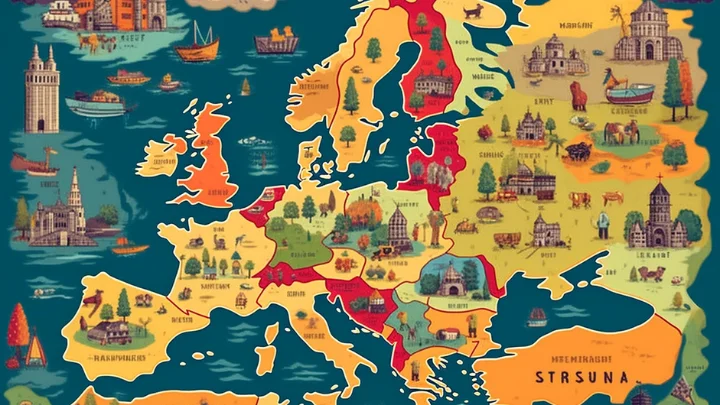
Albania on the Continent
Albania, a jewel in the crown of the Balkan Peninsula, is seated comfortably in Southeast Europe. It is strategically positioned, sharing its northern borders with Montenegro and Kosovo, while to the east, it neighbors North Macedonia and to the south, Greece. The natural western boundary is less defined by land and more by the lapping waves of the Adriatic Sea, which separates it from the boot of Italy. This proximity to both Mediterranean and Balkan states has fostered a blend of cultural influences that color every aspect of Albanian life.
The country’s topography is a dramatic theatre of nature, ranging from the tranquil coastline to the rugged, mountainous interior arable land that has often served as a natural fortress throughout history. The Albanian Alps in the north provide a majestic backdrop and a barrier that has historically shielded the nation, while the fertile plains in the west facilitate agricultural endeavors and have become corridors of trade and interaction.
In the geopolitical arena, Albania’s location has cast it as a sentinel at the gates between Western Europe and the Near East. Since its independence from the Ottoman Empire in the early 20th century, Albania has navigated complex international waters. Its integration into the global community has seen strides in recent decades with membership in NATO and candidacy status for the European Union, signifying its growing importance and influence within the continental fold. Its coastline serves as a strategic nautical entry point to the interior of the Balkans, which amplifies its voice in regional matters and increases its potential as a nexus for trade and diplomacy in Southeast Europe. This positioning is pivotal as Albania seeks to maintain stability within its own borders while playing a constructive role in the broader European context.
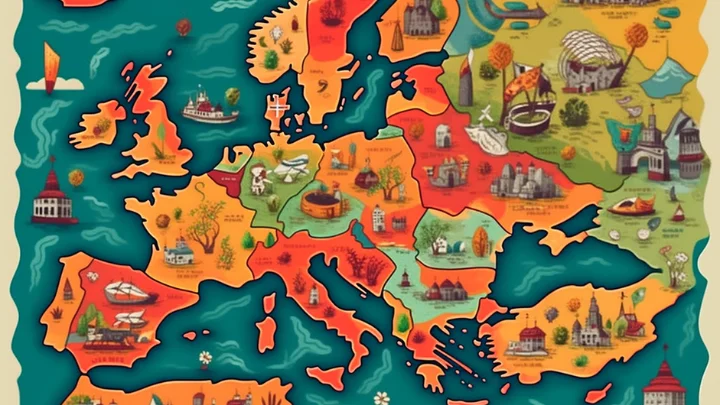
Neighboring Countries
Albania is cradled in the heart of the Balkan Peninsula, sharing its borders with four other countries there: Montenegro to the northwest, Kosovo to the northeast, North Macedonia to the east, and Greece to the south. These boundaries, which range from highland barriers to river divides, have played a significant role in shaping Albania’s regional relationships and interactions. Each neighboring nation contributes to the Balkans’ geography and histories.
Montenegro, separated by the meandering flow of the Bojana River and the rugged Prokletije mountains, has a shared history with Albania that includes both the Ottoman era and the more recent Yugoslav period. The border with Kosovo, although among the newest following Kosovo’s declaration of independence in 2008, is aligned with ethnic and historical ties due to the significant Albanian population in Kosovo. The boundary with North Macedonia is etched by the waters of Lake Ohrid and Lake Prespa, iconic natural landmarks that both separate and unite the nations through shared natural resources and heritage.
To the south, Greece presents a more complex narrative, with historical tensions giving way to a modern relationship built on mutual economic and military aid and regional interests. The maritime boundary with Italy, across the Strait of Otranto, is a corridor of cultural and commercial exchange, linking Albania with Southern Europe and beyond through the Adriatic Sea.
Cross-border relations for Albania are a delicate balance of preserving national interests and fostering regional cooperation. Economic partnerships, especially in energy and infrastructure, are vital and are often supported by EU frameworks aimed at Balkan integration. The shared challenges of managing migration, combating organized crime, and ensuring environmental protection also necessitate close collaboration with its neighbors. Furthermore, cultural and familial connections across these borders reinforce Albania’s commitment to peace and cooperation in Southeastern Europe. These cross-border dynamics are not only pivotal for Albania’s foreign policy but also enrich the cultural and social fabric of the nation itself.
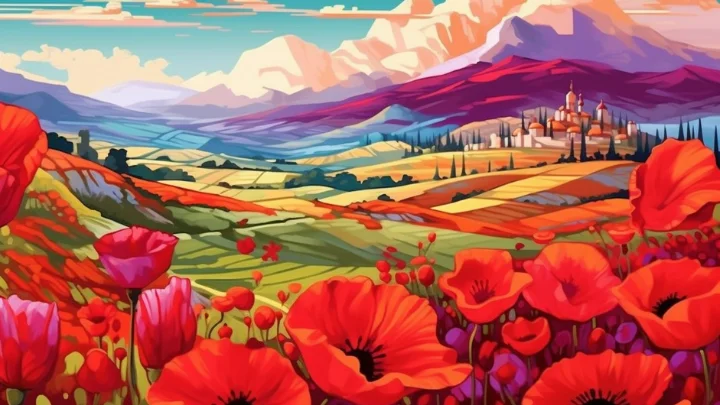
Symbols of Nationhood
Albania’s symbols of nationhood embody its history, resilience, and the natural beauty of its landscape, serving as powerful emblems of national identity and pride.
The Albanian Flag: The Albanian flag is immediately recognizable by its bold red backdrop and the distinctive black, double-headed eagle at its center. This emblem harks back to the Byzantine Empire, symbolizing the sovereign state of Albania and its people’s vigilance and readiness to defend their country. The red represents bravery, strength, and valor, while the two heads of the eagle are said to symbolize the unity of the north and south. The flag’s roots can be traced to the 15th-century hero, Gjergj Kastrioti—also known as Skanderbeg—who led a rebellion against Ottoman rule, and today it stands as a testament to Albania’s enduring struggle for sovereignty and independence.
The National Animal: The national animal, the golden eagle, further extends this symbolism. This majestic bird of prey, known locally as ‘Shqiponja’ (meaning “the Albanian”), is regarded as a totem of freedom and heroism, reflecting the country’s spirit. It is also a nod to the country’s diverse ecosystems, with Albania’s commitment to preserving its habitats underscored by its protected national parks where the golden eagle soars.
The National Bird: The national bird, meanwhile, is not explicitly designated, but the golden eagle often assumes this role by default due to its prominence in Albania’s national symbolism and its prevalence in the country’s fauna.
The National Flower: The red poppy, found adorning the fields and hillsides of Albania, is the national flower. It represents the bloodshed for independence and the natural beauty of the nation. Although not endangered, this flower, with its vibrant color and delicate petals, resonates with the themes of sacrifice and rebirth that are central to the nation’s historical narrative.
In conservation terms, Albania’s national symbols are protected under various environmental laws and regulations and international organizations. The country has been part of the Bern Convention, which aims to conserve wild flora and fauna and their natural habitats, and it is also a signatory to the Convention on International Trade in Endangered Species of Wild Fauna and Flora (CITES). Despite challenges, such as illegal hunting and habitat destruction, Albania continues to make strides in environmental protection and the preservation of its national symbols, reflecting a growing consciousness of the importance of its natural heritage in the nation’s identity.
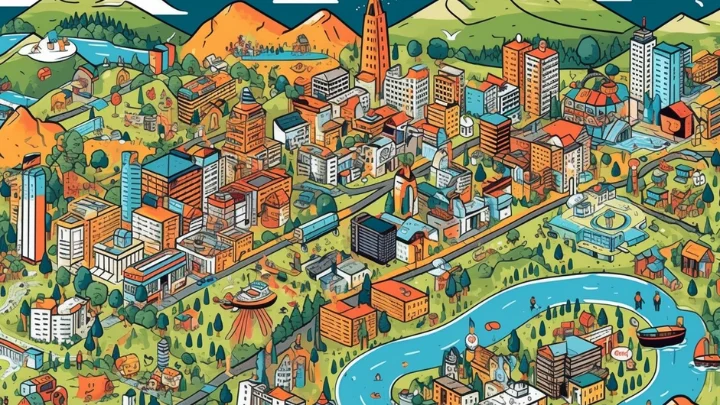
Major Cities and Capital City Spotlight
Tirana, the Capital City: Albania’s urban geography is marked with cities that echo its vibrant history and contemporary pulse, with Tirana—a city abuzz with energy and transformation—holding the spotlight as the nation’s capital. Founded in 1614, Tirana became the capital in 1920 and is the beating heart of Albanian culture, politics, and commerce. The city is a canvas of colorful facades, an architectural mosaic of its Ottoman, Italian, and communist past, now splashed with modernism. At its core, the Skanderbeg Square, named after the national hero, serves as a focal point for national celebrations and public gatherings. Tirana’s transformation from a gray, uniform city to a lively metropolis is reflective of Albania’s overall journey towards openness and integration with the global community.
Durrës: one of the oldest cities, sits on the coast, boasting the country’s main seaport. Its amphitheater, dating back to the 2nd century AD, stands testament to its historical importance, harking back to when Durrës was a significant center of trade and culture during Roman and Byzantine times.
Shkodër: near the border with Montenegro, is one of the oldest and most historic cities in Albania. It is often seen as the cradle of Albanian culture, given its status as the seat of the Roman Catholic Archdiocese in Albania and its wealth of historical buildings and artifacts. The city is also a gateway to the stunning natural beauty of the Albanian Alps.
Vlorë: on the southwestern coast, is steeped in significance for being the site where Albania declared its independence from the Ottoman Empire in 1912. Today, it is recognized for its beautiful beaches and as a burgeoning center for tourism and economic development.
The trend of urbanization in Albania has been accelerating, with many rural inhabitants moving to these urban centers seeking better opportunities. This demographic shift is reshaping the country’s social fabric and presenting challenges in terms of sustainable urban planning and development. However, it also underscores the historical significance of these cities as they evolve and adapt, mirroring Albania’s overall trajectory towards growth and modernization. These cities are not just residential and commercial hubs but are custodians of Albania’s rich history and are pivotal in charting the country’s future course.
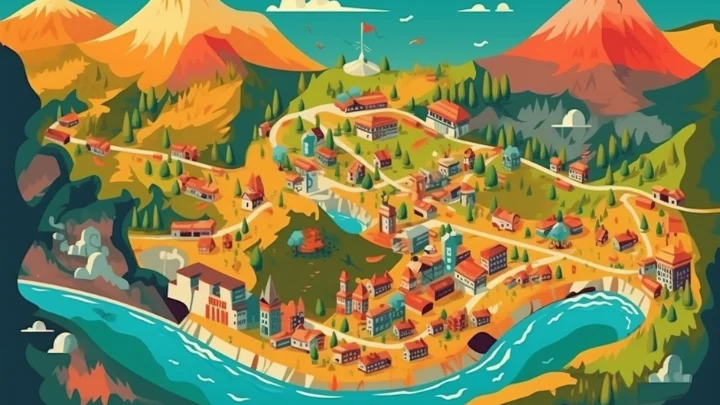
Physical Geography and Natural Hazards
Albania’s physical geography is a tapestry of diverse landscapes, stretching from the sun-kissed beaches of its expansive coastline to the rugged peaks of the Albanian Alps in the north. The country’s terrain is defined by dramatic contrasts, where over a third is mountainous, including the northern part of the Korab mountain range which harbors Mount Korab, the nation’s highest peak at 2,764 meters. These mountain ranges are not only significant for their scenic beauty but also for their role in shaping the local climate and hydrological networks that contribute to Albania’s rich biodiversity.
This varied topography cradles a wealth of natural resources, including significant deposits of minerals like chromium, copper, and iron. Albania’s river networks, like the Drin and the Vjosë, provide hydroelectric power and are vital for agriculture, supporting the cultivation of a range of crops from olives to citrus fruits in the fertile lowlands. The country’s biodiversity is remarkable, with its network of national parks, mostly mountains like Llogara and Theth, serving as sanctuaries for an array of flora and fauna, including rare species like the Balkan lynx.
However, Albania’s geographical beauty comes with the threat of natural hazards. The country is situated in a seismically active zone, making it prone to earthquakes. The most notable in recent history occurred in November 2019, striking near the port city of Durrës, which underscored the need for earthquake-resistant infrastructure and effective emergency response mechanisms. Apart from seismic activity, the country also faces risks from flooding, particularly in the low-lying coastal areas, and occasional droughts that can impact water resources and agriculture.
Albania’s government and international organizations are continuously working to improve natural disaster preparedness and mitigation strategies. Environmental management and sustainable development are increasingly important in policymaking, ensuring that Albania’s natural resources and the well-being of its communities are preserved for future generations. The challenge remains to balance economic development with the conservation of the country’s rich natural heritage and to prepare for the natural hazards and climate change that are an intrinsic part of its physical geography.

Human and Cultural Geography
Albania’s human and cultural geography presents a mosaic of diverse demographics, linguistic richness, and a vibrant array of traditions and religious practices that underscore the nation’s complex history.
The population distribution in Albania is markedly uneven, with a significant urban concentration in Tirana and other major cities like Durrës and Vlorë, while the rugged mountain areas are sparsely populated. This urban-rural divide has widened with the country’s shift towards a market economy, prompting migration towards urban centers in search of better livelihoods. The demographic profile is relatively young, with a median age in the late twenties, reflecting a population poised for change and modern influences.
Linguistic diversity in Albania is primarily represented by two dialects of the Albanian language: Gheg, spoken in the north, and Tosk, in the south. The Albanian language itself stands out in the Indo-European family for its unique characteristics and lack of close linguistic relatives, echoing the country’s isolation during much of the 20th century. Minority languages include Greek, Macedonian, Montenegrin, and Romani, reflecting the country’s ethnic tapestry.
Ethnic Albanians make up the vast majority of the population, with small communities of Greeks, Macedonians, Montenegrins, and Roma people enriching the country’s cultural fabric. Despite historical tensions, these ethnic groups all contribute to the rich cultural landscape, evident in the variety of festivals, music, and art throughout the country.
Traditionally, Albania is known for its code of hospitality, derived from the Kanun of Lekë Dukagjini, a set of traditional Albanian laws. This code emphasizes respect, honor, and the treatment of guests as a sacred duty. Religious practices in Albania are diverse and historically tolerant, with Sunni Islam being the majority faith, followed by significant numbers of Orthodox and Catholic Christians. This religious diversity is a testament to Albania’s historical position at the crossroads of empires and ideologies, which is celebrated in the harmonious coexistence seen today.
Cultural heritage in Albania is a treasure trove that includes folk music, such as the iso-polyphonic singing recognized by UNESCO, traditional dances, and a rich tradition of visual arts, crafts, and textiles. The country’s history from the ancient Illyrians to the present is encapsulated in a wealth of archaeological sites, historical structures, and museums that narrate the stories of Albania’s past. Maintaining these cultural elements is a point of pride for Albanians and is integral to the nation’s identity and continuity as a unique cultural entity in the heart of the Mediterranean.

Economy and Geopolitics
Albania’s economy, once rigidly centralized under its former communist regime, has transitioned significantly since the country’s shift towards democracy and a market-oriented system in the early 1990s. The transformation has been profound, with the nation opening up its economy to private enterprise and foreign investment, which has spurred growth and development.
Industry in Albania has diversified over the years, with textiles and footwear becoming prominent exports, alongside a growing mining sector that taps into the country’s rich deposits of chromium, copper, and nickel. The energy sector also plays a crucial role, with the country harnessing its rivers for hydroelectric power and natural gas, which it exports to neighboring countries, making it a regional player in renewable energy.
Agriculture remains a vital part of the Albanian economy, employing a significant portion of the population. The sector is characterized by small-scale farms, and it is gradually modernizing and becoming more integrated into the global market. The mild Mediterranean climate allows for a wide range of crops, and there is a growing emphasis on organic and sustainable practices to meet European standards.
Trade relations have been expanding, especially with the European Union, which is Albania’s main trading partner. The country’s aspirations to join the EU have prompted significant economic reforms and infrastructural improvements to align with European standards. As a candidate country for EU membership, Albania is progressively entwining its economic policies with EU directives, aiming to foster stability, promote investment, and improve the business environment.
On the geopolitical stage, Albania’s role has evolved remarkably. As a member of NATO since 2009, Albania contributes to regional security and participates in peacekeeping missions. Its strategic location on the Adriatic Sea and as a gateway to the Balkans gives it geopolitical importance, especially in terms of energy corridors, such as the Trans Adriatic Pipeline that is part of the Southern Gas Corridor supplying Europe. Albania also plays an active role in regional initiatives like the Central European Free Trade Agreement (CEFTA), which promotes trade and economic integration among non-EU countries in Southeast Europe.
Despite its progress, Albania faces challenges such as strengthening its rule of law, combating corruption, and improving public administration — all crucial for its EU accession process. Nonetheless, the nation is poised on a path of growth democratic development, leveraging its geopolitical position, pursuing economic integration, and aiming for a stable and prosperous future within the European and global community.
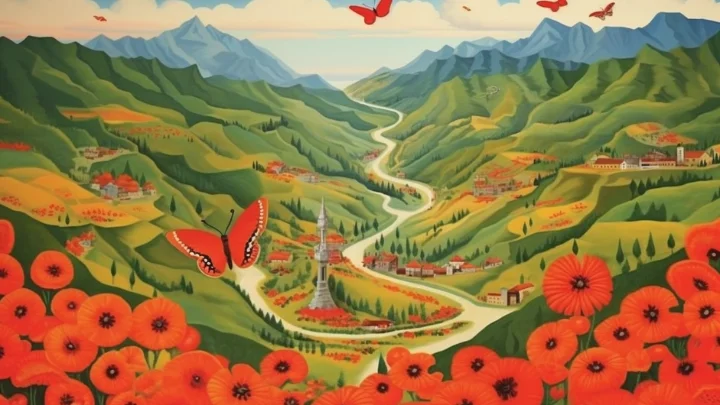
UNESCO World Heritage Sites
Albania’s rich cultural tapestry is encapsulated within its UNESCO World Heritage Sites, places of universal value that celebrate the country’s historical narrative and natural splendor.
Butrint, an ancient city located in the south, near the Greek border, offers a time capsule through Mediterranean history. Initially a settlement of the ancient Greeks, it later flourished under the Romans, Byzantines, and Venetians, which is reflected in the diverse array of ruins that include a Greek acropolis, a Roman theatre, and a Byzantine Basilica. The archaeological site, surrounded by a picturesque lagoon, is a significant draw for tourists and serves as a living classroom for the history and evolution of the region.
Further inland, the historic city centers of Berat and Gjirokastër are recognized as fine examples of Ottoman architecture and urban planning, each known colloquially as the “city of a thousand windows” and “city of stone,” respectively. Berat’s tiered townscape and Gjirokastër’s stone-roofed houses paint a picture of the Ottoman period’s social and cultural fabric. Both cities are remarkable for their well-preserved, authentic historic structures, and they continue to be inhabited, with locals living and working in these ancient buildings, adding a dynamic layer to their historical value.
The inclusion of these sites on the World Heritage list underscores their significance and necessitates rigorous preservation efforts. Albania has taken strides to protect these treasures by implementing management plans that balance conservation needs with the demands of modern development. The sites not only attract tourism, contributing to the local and national economy but also encourage sustainable tourism practices that respect the delicate balance between preserving Albania’s cultural assets and showcasing them to the world.
These UNESCO sites are pivotal in Albania’s tourism industry, drawing visitors keen to explore the rich layers of history and culture. They serve as cornerstones for various cultural activities, festivals, and art that engage both visitors and locals, fostering a sense of pride and ownership in Albania’s heritage. As the country evolves, these sites remain anchors to its past, ensuring that Albania’s historical and cultural narrative continues to be told and celebrated.
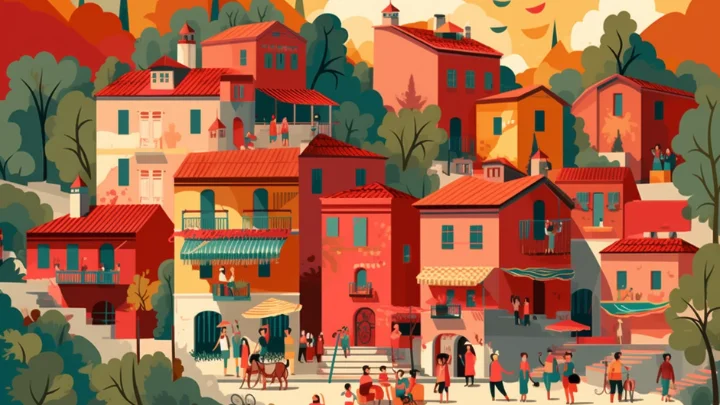
Fun Facts and Unique Insights
Albania is a treasure trove of fascinating customs, tantalizing culinary traditions, and distinctive clothing that reflect its rich cultural mosaic and history.
One unique Albanian tradition is the “Besa,” a cultural precept considered to be the highest ethical code in the country. “Besa” translates to a pledge of honor and is a promise that at least one parent’s word is unbreakable, reflecting the deep sense of trust and honor that permeates Albanian social interactions. This code played a significant role during World War II when Albanians, following “Besa,” protected thousands of Jews from persecution, often at great personal risk.
When it comes to cuisine, Albania offers a medley of flavors that are as varied as its landscapes. A visitor might be delighted by the taste of “Fërgesë,” a hearty dish typically made with peppers, tomatoes, and cottage cheese. The coastal regions offer an abundance of seafood specialties, such as “Jani me fasule,” a traditional bean stew with a savory twist. The country’s Ottoman past also left its mark on the cuisine, with “Byrek,” a flaky pie filled with spinach, meat, or cheese, being a popular snack.
Albanian traditional clothing varies by region but is universally admired for its intricate embroidery and vibrant colors. The “Xhubleta,” a bell-shaped traditional dress, is particularly notable and is still worn by women in the highlands during folk festivals. Men’s clothing often features the “Fustanella,” a kilt-like garment, which is paired with embroidered vests and fez hats, showcasing a pride in heritage that has been passed down through generations.
These fun facts and unique insights into Albania’s customs, gastronomy, and sartorial choices offer just a glimpse into the nation’s rich cultural identity, which is as inviting as it is intriguing. They are not only a testament to Albania’s diverse history but also serve as a living bridge connecting the past to the present.
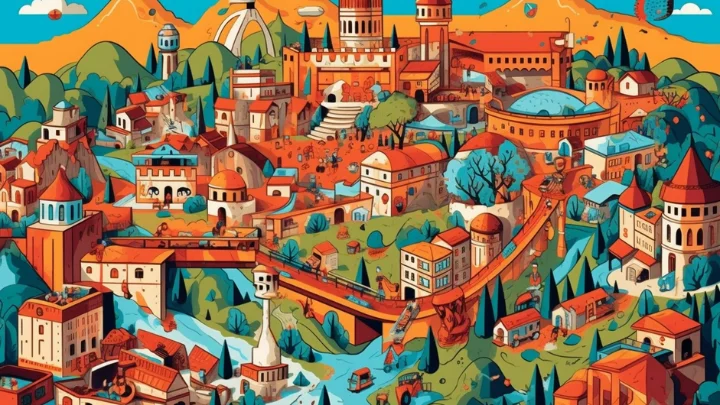
Famous Albanians
Albania has produced a cadre of notable figures who have made their mark on both the historical stage and in contemporary times across various fields.
Historically, perhaps no figure stands as prominently as Gjergj Kastrioti, better known as Skanderbeg. A 15th-century nobleman and military commander, Skanderbeg is celebrated for his rebellion against the Ottoman Empire and for unifying Albanian princes in the fight for national independence. His legacy endures as a symbol of unity and resistance in Albania and is a cornerstone of the nation’s historical narrative.
In the realm of literature, the poet Ismail Kadare has gained international acclaim. A perennial contender for the Nobel Prize in Literature, Kadare’s works, which often interweave Albanian history and mythology with modern themes, have been translated into many languages, bringing Albanian culture to a global audience.
In contemporary times, Albanians continue to shine on the world stage. In sports, footballer Lorik Cana captained the Albanian national team and became a symbol of pride for his contributions to Albania’s international football presence. Meanwhile, in the arts, soprano Ermonela Jaho has won acclaim in the world of opera, enchanting audiences at venues like The Royal Opera House in London and the Metropolitan Opera in New York.
The sciences are not without Albanian representation either. Dr. Ferid Murad, an American physician and pharmacologist of Albanian descent, was awarded the Nobel Prize in Physiology or Medicine in 1998 for his work on nitric oxide as a signaling molecule in the cardiovascular system.
These individuals represent just a fraction of the many Albanians who have achieved prominence and serve as inspirations across the spectrum of human endeavor. They reflect the nation’s spirit and its contributions to the arts, sports, sciences, and the overarching fabric of global culture.
Wrap Up...
As our exploration of Albania draws to a close, we are left with a vivid picture of a country whose geographical marvels have shaped not just the nation’s rugged and diverse topography, but also its cultural identity, history, and socioeconomic trajectory. Albania’s mountains have served as bastions of protection and isolation, while its rivers and fertile plains have nurtured civilizations and sustained communities throughout millennia. The Adriatic and Ionian coastlines have connected Albania with the wider world, facilitating trade and cultural exchange.
This interplay between land and history is nowhere more evident than in the way Albania’s geography has carved out a unique national character — one of resilience, hospitality, and a mosaic of cultural influences. From the ancient city of Butrint to the stone-clad streets of Gjirokastër and Berat, the landscape has been a silent witness to the ebb and flow of empires and epochs that have swept through this region.
Looking ahead, Albania’s geography continues to be a central character in its unfolding story. As the country marches towards a future that promises greater integration with Europe and the global community, its mountains, rivers, and coastlines remain a source of both opportunity and challenge. These natural assets are crucial to Albania’s economic ambitions, from energy production to tourism, and they play a pivotal role in national and regional geopolitics.
In essence, Albania’s geography is not just a backdrop but a dynamic and living canvas, continually influencing and reflecting the soul of the nation. As Albania harnesses its geographic potential and addresses its challenges, it does so with an acute awareness of how the past is etched into its mountains and valleys and how these same landscapes will mold its tomorrow. The country’s geographical heritage, rich in diversity and complexity, stands as a testament to Albania’s enduring legacy and its aspirations for the future.

